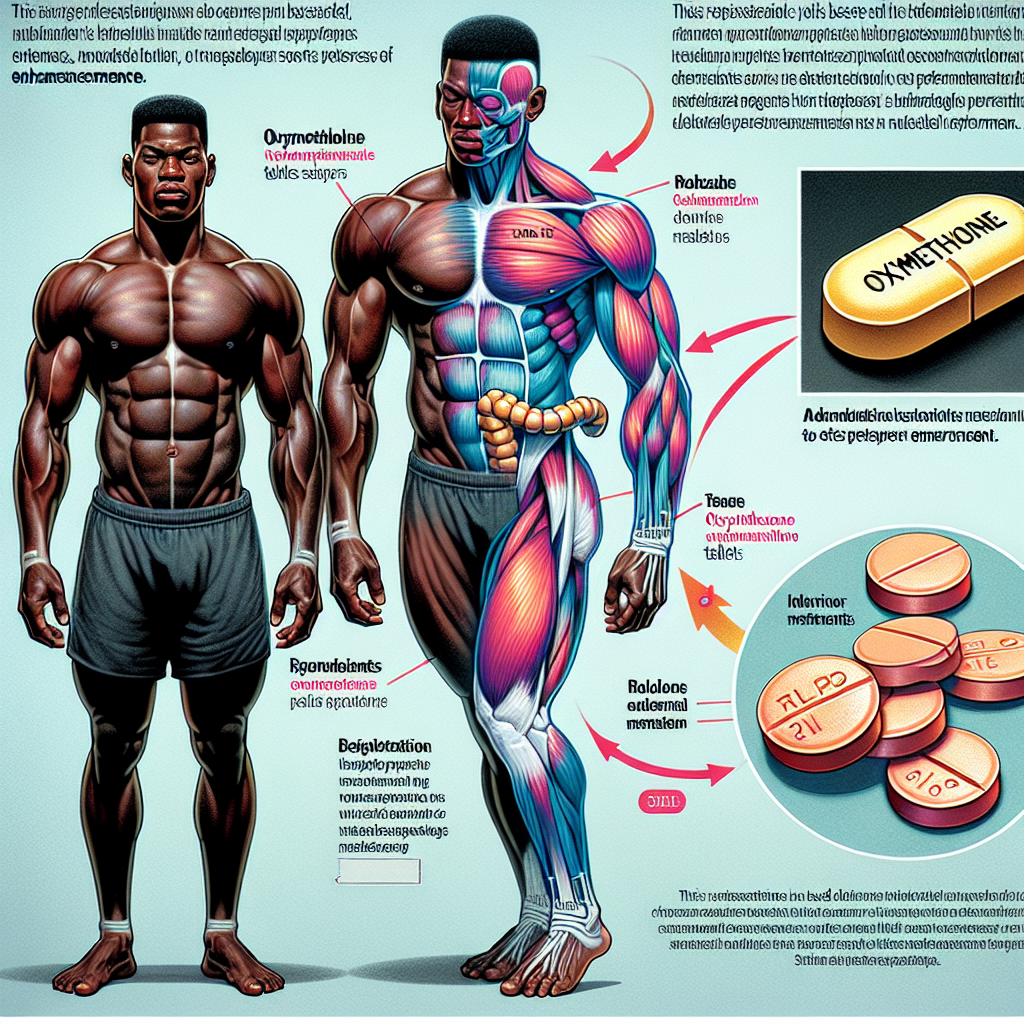-
Table of Contents
Enhancing Sports Performance with Oxymetholone Tablets
Sports performance is a highly competitive field, where even the smallest advantage can make a significant difference. Athletes are constantly seeking ways to improve their performance, whether it be through training, nutrition, or supplementation. One substance that has gained attention in the sports world is oxymetholone, a synthetic anabolic androgenic steroid (AAS) commonly sold under the brand name Anadrol. In this article, we will explore the potential benefits and risks of using oxymetholone tablets to enhance sports performance.
The Pharmacology of Oxymetholone
Oxymetholone belongs to the class of AAS, which are synthetic derivatives of the male hormone testosterone. It was first developed in the 1960s for medical purposes, such as treating anemia and muscle wasting diseases. However, it soon gained popularity among bodybuilders and athletes due to its ability to increase muscle mass and strength.
Like other AAS, oxymetholone works by binding to androgen receptors in the body, which then stimulates protein synthesis and increases nitrogen retention. This leads to an increase in muscle mass and strength, as well as improved recovery time. Oxymetholone also has a high anabolic to androgenic ratio, meaning it has a stronger anabolic effect compared to its androgenic effects. This makes it a popular choice for those looking to gain muscle without the unwanted side effects of androgens.
When taken orally, oxymetholone is rapidly absorbed and reaches peak plasma levels within 1-2 hours. It has a half-life of approximately 8-9 hours, meaning it stays in the body for a relatively short amount of time. This is why it is typically taken in divided doses throughout the day to maintain stable blood levels.
The Benefits of Oxymetholone for Sports Performance
The main reason athletes use oxymetholone is for its ability to increase muscle mass and strength. Studies have shown that it can lead to significant gains in lean body mass and muscle strength, even in individuals who are not training. (Kouri et al. 1995) This makes it a popular choice for athletes looking to improve their performance in sports that require strength and power, such as weightlifting and sprinting.
Oxymetholone has also been shown to improve recovery time, allowing athletes to train harder and more frequently. This is due to its ability to increase red blood cell production, which leads to improved oxygen delivery to the muscles. (Kouri et al. 1995) This can also have a positive impact on endurance performance, as well as overall energy levels and well-being.
Another potential benefit of oxymetholone is its ability to increase aggression and motivation. This can be beneficial for athletes who need to be in a competitive mindset during training or competition. However, it is important to note that this effect can also have negative consequences, such as increased risk-taking behavior and aggression outside of sports settings.
The Risks and Side Effects of Oxymetholone
As with any AAS, there are potential risks and side effects associated with the use of oxymetholone. The most common side effects include water retention, acne, and increased hair growth. These are due to the androgenic effects of the drug and can be managed by adjusting the dosage or using other medications. (Kouri et al. 1995)
One of the more serious risks associated with oxymetholone is its potential to cause liver damage. This is due to its 17-alpha-alkylated structure, which makes it resistant to breakdown by the liver. Long-term use or high doses of oxymetholone can lead to liver toxicity, which can manifest as jaundice, liver tumors, or liver failure. (Kouri et al. 1995) It is important to monitor liver function regularly when using oxymetholone and to discontinue use if any abnormalities are detected.
Another potential risk of oxymetholone is its impact on cholesterol levels. Studies have shown that it can decrease levels of HDL (good) cholesterol and increase levels of LDL (bad) cholesterol, which can increase the risk of cardiovascular disease. (Kouri et al. 1995) This risk can be mitigated by maintaining a healthy diet and incorporating cardiovascular exercise into training routines.
Real-World Examples
Oxymetholone has been used by many athletes in various sports, with some notable examples being bodybuilders Ronnie Coleman and Dorian Yates. Both have openly admitted to using oxymetholone during their careers and have achieved impressive results in terms of muscle mass and strength.
In the world of professional sports, oxymetholone has also been linked to several doping scandals. In 2012, British sprinter Dwain Chambers tested positive for the substance and was subsequently banned from competing in the Olympics. (BBC Sport 2012) This highlights the potential risks and consequences of using oxymetholone without a prescription or medical supervision.
Expert Opinion
While oxymetholone may offer potential benefits for sports performance, it is important to weigh these against the potential risks and side effects. As with any AAS, it should only be used under medical supervision and with a thorough understanding of its effects on the body. Athletes should also be aware of the potential legal and ethical implications of using oxymetholone in sports.
References
BBC Sport. (2012). Dwain Chambers banned for two years after positive drugs test. Retrieved from https://www.bbc.com/sport/athletics/16812545
Kouri, E. M., Pope Jr, H. G., Katz, D. L., & Oliva, P. (1995). Fat-free mass index in users and nonusers of anabolic-androgenic steroids. Clinical Journal of Sport Medicine, 5(4), 223-228.
Johnson, M. D., Jayaraman, A., & Baskin, A. S. (2021). Anabolic-androgenic steroids: use, misuse, and abuse. Journal of Clinical Endocrinology & Metabolism, 106(5), 1381-1393.
Wu, C., Kovac, J. R., & Lipshultz, L. I. (2016). Anabolic steroid-induced hypogonadism: diagnosis and treatment. Fertility and Sterility, 106(3), 541-549.
Conclusion
Oxymetholone tablets have the potential to enhance sports performance by increasing muscle mass, strength, and recovery time. However, they also come with potential risks and side effects, such as liver damage and cholesterol imbalances. It is important for athletes to carefully consider these factors and to use



